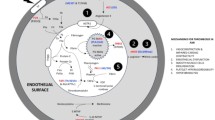Summary
This study investigated the relationship between IL-33/ST2 signal pathway gene polymorphisms and myocardial infarction (MI) in Han Chinese. A case-control association analysis was performed on a total of 490 MI patients (MI group) and 929 normal subjects (NC group). Sequenom Mass Array and Taqman genotyping technique were used to analyze the tag single nucleotide polymorphisms (SNPs) in the genes encoding IL-33, ST2, and IL-1RaP (rs11792633, rs1041973 and rs4624606). The results showed that the frequencies of rs4624606 genotypes AA, TT, AT were 0.031, 0.647, 0.322 in MI group and 0.026, 0.712, 0.263 in NC group, and the allele frequencies of A and T were 0.192, 0.808 in MI group and 0.157, 0.843 in NC group. There were significant differences in rs4624606 genotypes and allele frequencies between MI group and NC group (P<0.05). For rs11792633, the allele frequencies of C and T were 0.45, 0.55 in MI group and 0.454, 0.546 in NC group with no significant differences found between the two groups. Compared with genotype CC+TC, rs11792633 genotype TT had an increased risk of hypertension (P<0.05). However, there were no significant differences in the frequencies of rs11792633 genotypes between the two groups. No significant differences were noted in the frequencies of rs1041973 genotype and allele between the two groups. Logistic regression analysis showed that rs4624606 genotypes AT and AA+AT were both significantly associated with MI (AT: OR=1.325, P=0.029, 95% CI=1.03–1.705; AA+AT: OR=1.316, P=0.028, 95% CI=1.03–1.681) after factors such as age, gender, smoking, drinking, body mass index (BMI), triglyceride (TG) and cholesterol were adjusted. Those carrying rs4624606 genotype AT or AA+AT had an increased risk of MI. No associations were found between the polymorphisms of the other two loci with MI. It was concluded that, in the IL33/ST2 signal pathway, the A allele of rs4624606 polymorphism of IL-1RaP gene is a potential independent risk factor for MI, and the genotypes AA+AT and AT are associated with the incidence of MI.
Similar content being viewed by others
References
Hansson GK, Libby P, Schonbeck U, et al. Innate and adaptive immunity in the pathogenesis of atherosclerosis. Circ Res, 2002,91(4):281–291
Schmitz J, Owyang A, Oldham E, et al. IL-33, an interleukin-1-like cytokine that signals via the IL-1 receptor-related protein ST2 and induces T helper type 2-associated cytokines. Immunity, 2005,23(5):479–490
Weinberg EO, Shimpo M, De Keulenaer GW, et al. Expression and regulation of ST2, an interleukin-1 receptor family member, in cardiomyocytes and myocardial infarction. Circulation, 2002,106(23):2961–2966
Weinberg EO, Shimpo M, Hurwitz S, et al. Identification of serum soluble ST2 receptor as a novel heart failure biomarker. Circulation, 2003,107(5):721–726
Sabatine MS, Morrow DA, Higgins LJ, et al. Complementary roles for biomarkers of biomechanical strain ST2 and N-terminal prohormone B-type natriuretic peptide in patients with ST-elevation myocardial infarction. Circulation, 2008,117(15):1936–1944
Kohli P, Bonaca MP, Kakkar R, et al. Role of ST2 in non-ST-elevation acute coronary syndrome in the MERLIN-TIMI 36 trial. Clin Chem, 2012,58(1):257–266
Eggers KM, Armstrong PW, Califf RM, et al. ST2 and mortality in non-ST-segment elevation acute coronary syndrome. Am Heart J, 2010,159(5):788–794
Miller A, Asquith D, Hueber A, et al. Interleukin-33 induces protective effects in adipose tissue inflammation during obesity in mice. Circ Res, 2010,107(5):650–658
Miller AM, Xu D, Asquith DL, et al. IL-33 reduces the development of atherosclerosis. J Exp Med, 2008,205(2): 339–346
Choi YS, Choi HJ, Min JK, et al. Interleukin-33 induces angiogenesis and vascular permeability through ST2/TRAF6-mediated endothelial nitric oxide production. Blood, 2009,114(14):3117–3126
Kakkar R, Lee RT. The IL-33/ST2 pathway: therapeutic target and novel biomarker. Nat Rev Drug Discov, 2008,7(10):827–840
Roger VL, Go AS, Lloyd-Jones DM, et al. Heart disease and stroke statistics—2012 update: a report from the American Heart Association. Circulation, 2012,125(1):e2–e220
He J, Gu D, Wu X, et al. Major causes of death among men and women in China. New Engl J Med, 2005,353(11): 1124–1134
Blagodatskikh K, Evdokimova M, Agapkina I, et al. Gene IL6 G(-174)C and gene IL10 G(-1082)A polymorphisms are associated with unfavourable outcomes in patients with acute coronary syndrome. Mol Biol (Russian), 2010,44(5): 839–846
Chen Y, Huang H, Liu S, et al. IL-16 rs11556218 gene polymorphism is associated with coronary artery disease in the Chinese Han population. Clin Biochem, 2011,44(13): 1041–1044
Zhang X, Pei F, Zhang M, et al. Interleukin-17A gene variants and risk of coronary artery disease: A large angiography-based study. Clinica Chimica Acta, 2011,412(3–4):327–331
Wu F, He M, Wen Q, et al. Associations between Variants in IL-33/ST2 Signaling Pathway Genes and Coronary Heart Disease Risk. Int J Mol Sci, 2014, 15(12):23227–23239
Liew FY, Pitman NI, McInnes IB. Disease-associated functions of IL-33: the new kid in the IL-1 family. Nat Rev Immunol, 2010,10(2):103–110
Kurowska-Stolarska M, Stolarski B, Kewin P, et al. IL-33 amplifies the polarization of alternatively activated macrophages that contribute to airway inflammation. J Immunol, 2009,183(10):6469–6477
Liew FY, Pitman NI, McInnes IB. Disease-associated functions of IL-33: the new kid in the IL-1 family. Nat Rev Immunol, 2010,10(2):103–110
Sedhom M, Pichery M, Murdoch J, et al. Neutralisation of the interleukin-33/ST2 pathway ameliorates experimental colitis through enhancement of mucosal healing in mice. Gut, 2013,62(12):1714–1723
Tsapaki A, Zaravinos A, Apostolakis S, et al. Genetic variability of the distal promoter of the ST2 gene is associated with angiographic severity of coronary artery disease. J Thromb Thrombolysis, 2010,30(3):365–371
Tu X, Nie S, Liao Y, et al. The IL-33-ST2L pathway is associated with coronary artery disease in a Chinese han population. Am J Hum Genet, 2013,93(4):652–660
Chapuis J, Hot D, Hansmannel F, et al. Transcriptomic and genetic studies identify IL-33 as a candidate gene for Alzheimer’s disease. Molecular Psychiatry, 2009,14(11): 1004–1016
Author information
Authors and Affiliations
Corresponding author
Additional information
Both authors contributed equally to this work.
This project was supported by a grant from the National Natural Science Foundation of China (No.81172750).
Rights and permissions
About this article
Cite this article
Yang, Jh., Wu, Fq., Wen, Q. et al. Association of IL33/ST2 signal pathway gene polymorphisms with myocardial infarction in a Chinese Han population. J. Huazhong Univ. Sci. Technol. [Med. Sci.] 35, 16–20 (2015). https://doi.org/10.1007/s11596-015-1382-9
Received:
Revised:
Published:
Issue Date:
DOI: https://doi.org/10.1007/s11596-015-1382-9




